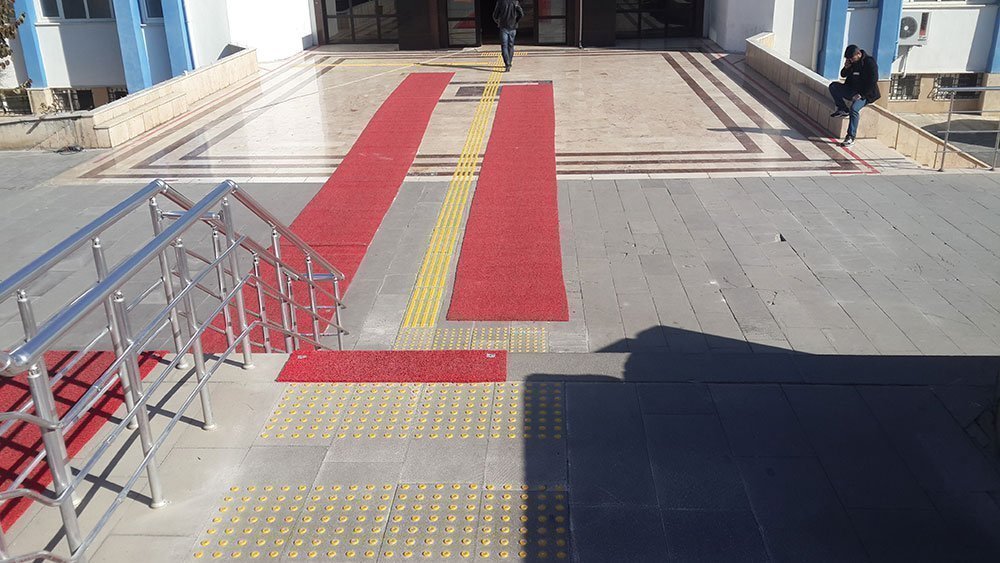What is the Law of the Sensible Surface?
The question of what is the tactile surface law can be answered as a law that includes the areas of tactile surface application and how to apply it, which aims to facilitate the daily life of visually impaired individuals, explained in the 2nd and 3rd articles of the law numbered 5378.
According to this law, technical specifications such as the dimensions used for the sensible surface should comply with the sensible surface law, the surface should be produced in accordance with the standards, and it should be resistant to cleanliness and weather conditions.
The surfaces in question took their place in Turkey with the Prime Ministry Circular published in the Official Gazette on 12 July 2006 within the framework of the European Union harmonization laws.
Subsequently, as a result of the researches and the reports issued, the current standards were established and made compulsory by spreading throughout the country.

In the image, the floor produced and applied on behalf of the tactile surface law can be seen.
Sensible Surface Types
According to the tactile surface technical specification, there are 4 types of surfaces. These 4 types, which should be produced in accordance with the Construction Materials Regulation, should also be made in accordance with the Ministry of Family and Social Policies Perceptible Surface Workshop Report I and II and TS ISO 23599 application standard.
guide surface.
Parallel array stimulating surface.
Guide surface (without indoor base).
Parallel array stimulating surface (without interior floor)
All of the mentioned 4 types must have a warranty period of 5 years within the scope of production defect and 1 year under the scope of consumption fault. The tactile surface products must have passed certain tests.
They must be in a structure that does not repel dirt, is easy to clean, and is resistant to hot or cold weather conditions. Sensible surface products, which should not show any deformation or instability against temperatures between 25 and + 70 degrees, occupy a very large place in the question of what is the law of sensible surface.
Technical Specification of Baseless Tactile Surface Adhesive
Glue, which is a special adhesive used in tactile surface mounting that facilitates the lives of visually impaired individuals, also has some properties that must be met. In order to get the most benefit from the tangible surface, it is at least as important as the surface and therefore must be just as durable.
Double-sided adhesive should be white acrylic tape.
It should be resistant to water, humidity or all weather conditions.
It should be able to ensure that all kinds of surfaces adhere to each other. (Metal, steel, granite, glass, marble, ceramic, plastic etc.)
It should be able to give the result as soon as possible and be suitable for opening the applied area to traffic as soon as possible.
It must be adapted to the palpable surface material and the floor with a guarantee period of at least 3 years.
It should be resistant to substances such as gas and oil that may flow from vehicles or to chemicals to be used in cleaning.
It should not be affected by sun rays.
The adhesive in question must have a RoHS Certificate.
The thickness of the tape should be between 1-1.20 mm.
The tape should be transparent and white.
Apart from these features, it is expected that the density of the tape should not fall below 820 kg/m³, its tensile strength should not be below 965 kPa (ASTMD-897), it should be resistant to -30, +90 degrees. The answer to the question of what is the law of the sensible surface that can affect the quality of life of a visually impaired individual is as comprehensive as its importance.






